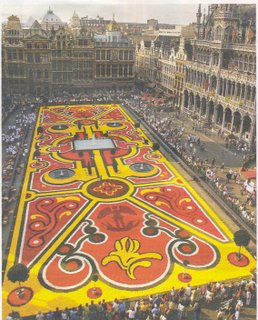This site has been exploring a number of areas connected with ephemeral arts. It would be useful to examine what has been achieved so far and to outline the scope for future development of the blog as a resource for students, teachers, librarians and parents.
Further work is to be presented to address the specific areas of interest that have been identified and inspired by the blog so far. A number of students, artists and teachers have responded by email or made verbal comments. These comments will be taken on board. The blog is intended for students at GCSE and 'A' Level standard, that is, for those who may be working on projects as a part of their secondary school education. More advanced students and also their teachers may also find that elements covered here will inspire them to look further at some of the themes outlined here.
The blog is also intended for the lay reader who may just want to look at artistic expression in a different way. The blog will also be of interest to younger children who can see, interpret and enjoy the pictures provided here.
So the questions we started to address are still valid-
- what are the ephemeral arts?
- How can we interpret these forms of expression?
- What are the different ways of thinking about time-based culture?
People provide artistic expression to celebrate an event. They dress and present themselves for the occasion through artistic expression. They decorate the buildings or houses where the cultural events take place. They celebrate important events in the open air. Many of the ephemeral arts are connected to important dates in the cultural, religious, political and historical calendars of communities in different parts of the world.
Predicting future activities on this site...
I have also created some routes or pathways for investigating ephemeral arts in the future:
- Entries related to "Exploring avenues for inspiration" will examine the work of artists whose work is dedicated to time-based cultural and artistic expression, or whose output is also ephemeral. A start has been made by looking at the work of Andy Goldsworthy. There is scope for looking at the work of other artists, some of whom may not be famous or even be known.
- Further work is to be presented to address the theme," Exploring Avenues for Cultural Communication" where a range of entries will be produced to reflect the diversity of this area.
- A third theme has been added. It explores ephemeral arts by linking them to geography and to various countries where these arts are most visible.
- More themes will be added later.

